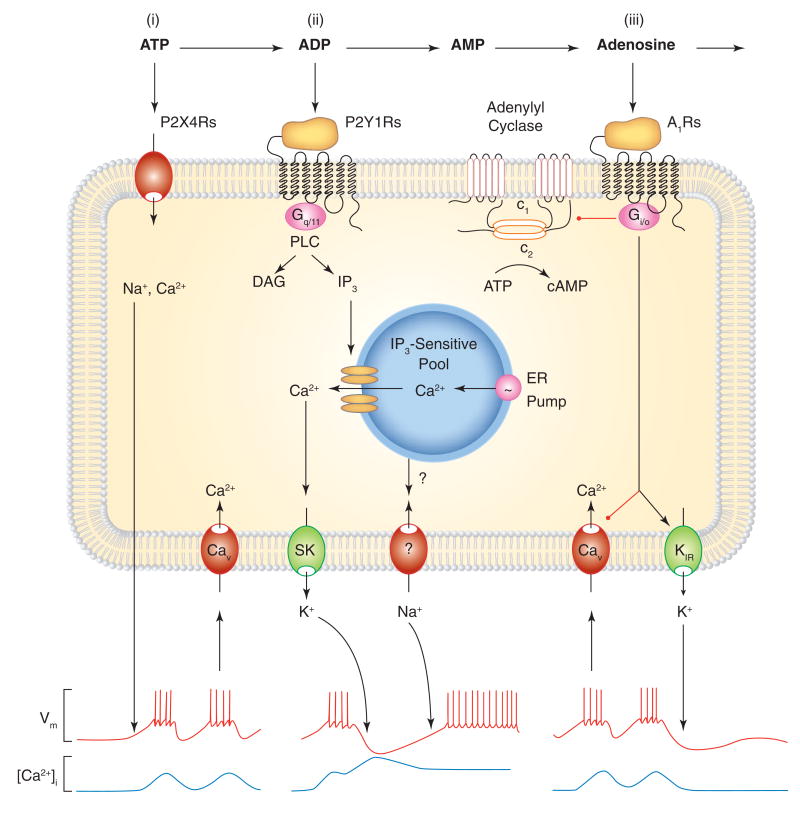Figure 4.
Roles of ectonucleotidases in sequential activation of purinergic receptors. In cells co-expressing P2XRs, P2YRs, and ARs, the ectonucleotide cascade leads to sequential activation of receptors. Scheme illustrates signaling cascade in a fraction of pituitary lactotrophs. (i) Activation of P2X4Rs by ATP leads to cation influx and predominantly Na+-dependent depolarization of the cell membrane. This in turn facilitates action potential firing and Ca2+ influx through voltage-gated calcium (Cav) channels. In cells with activated inositol 1,4,5-triphosphate (IP3)-dependent channels, this Ca2+ influx can stimulate or inhibit opening of these channels (not shown), (ii) E-NTPDase-mediated generation of ADP leads to the subsequent activation of Ca2+-mobilizing P2Y1Rs coupled to phospholipase C (PLC) signaling pathway, generation of diacylycerol (DAG) and IP3, and IP3-dependent Ca2+ release from ER. The released Ca2+ triggers transient hyperpolarization of the cell membrane mediated by calcium-activated SK type K+ channels, followed by a sustained depolarization of the plasma membrane through still not identified channels. These could be the store operated Orai channels or PLC signaling-dependent activation of TRP channels. Both Ca2+ release from ER and Ca2+ influx through Cav channels further stimulates hormone secretion (not shown). (iii) Ecto-5′-nucleotidase-mediated generation of adenosine leads to stimulation of Gi/o-coupled A1Rs. The α subunit of heterotrimeric Gi/o proteins inhibits adenylyl cyclase-mediated generation of cAMP (shown in the top part of the cell membrane), an intracellular messenger that in hypothalamic and pituitary cells facilitates electrical activity by stimulating hyperpolarization-activated cyclic nucleotide-regulated channels and inhibiting inward rectifying K (Kir) channels (not shown). The Gi/o-βγ dimmer also helps terminating the P2R-induced facilitation of electrical activity by stimulating Kir channels and inhibiting Cav channels. Such inhibition could help limit the physiological impact of prolonged activation of PXRs on lactotroph excitability. A three-receptor pathway may also be operative in some lateral and posterior hypothalamic neurons, whereas other pituitary cells and vasopressinergic neurons co-express P2X2R and A1Rs. Black arrows indicate stimulatory action, and red lines indicate inhibitory actions.

